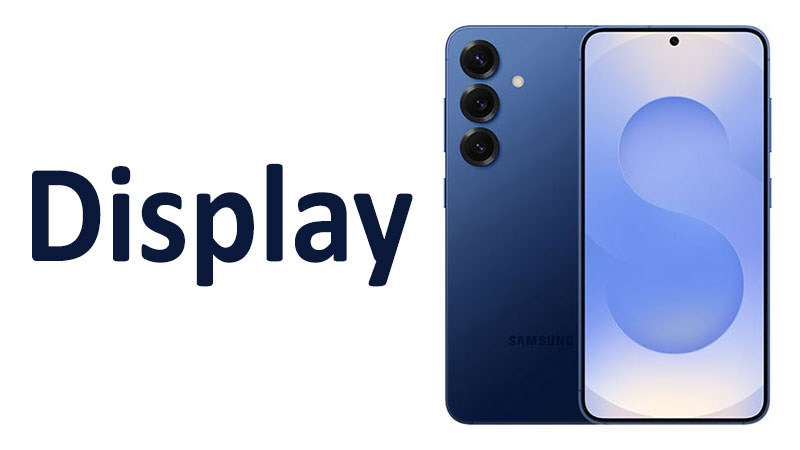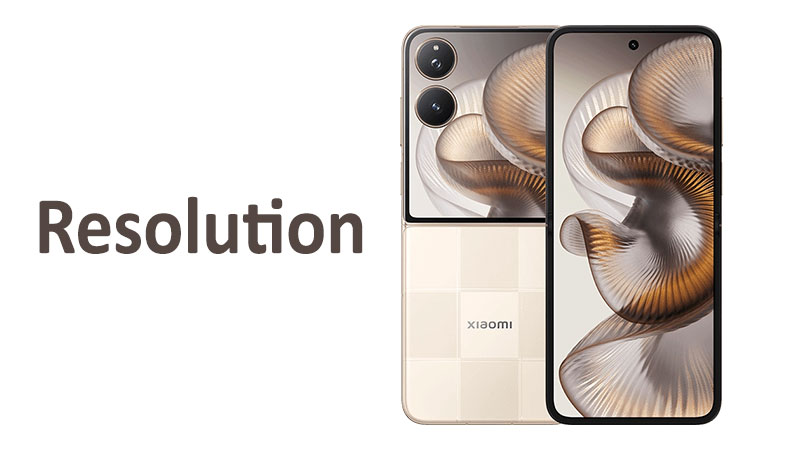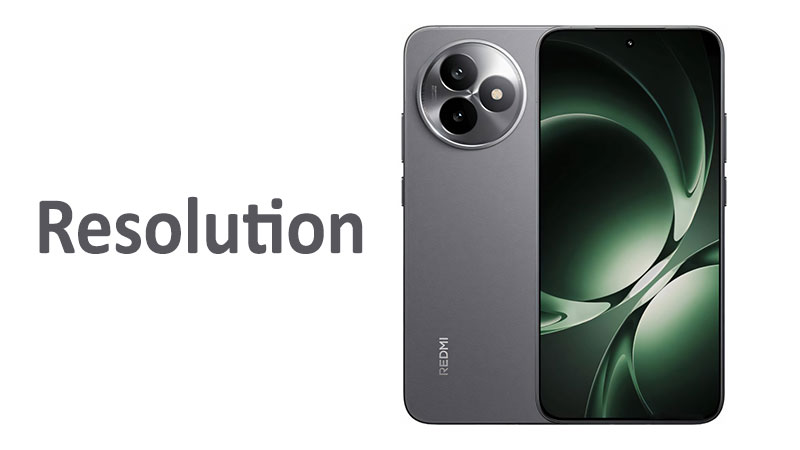The Samsung Galaxy S25 display is the single most important component of the device. It is the main gateway for all user interaction and content consumption. A great display ensures a superior user experience, from browsing social media to high-definition gaming. Samsung has long been the industry leader in display technology. The Galaxy S25 maintains this reputation with cutting-edge panel specifications. This article provides a comprehensive review of the screen’s technical details. We will analyze the technology, resolution, brightness, and durability. Buyers can use this guide to fully understand the quality they are purchasing. We will ensure every specification is explored in detail.
Core Specifications of the Samsung Galaxy S25 Display
The Samsung Galaxy S25 features a panel loaded with advanced technology. This display is built upon years of innovation. Every component is engineered to deliver stunning visuals and efficiency. Understanding the core specifications is essential for appreciating the screen’s overall performance. This includes the panel type, size, and physical protection.
The Dynamic LTPO AMOLED 2X Technology
The core of the screen is its Dynamic LTPO AMOLED 2X panel. AMOLED stands for Active-Matrix Organic Light-Emitting Diode. This technology allows each pixel to emit its own light. Therefore, it delivers perfect black levels and incredible contrast ratios. When a pixel is black, it is truly off. This leads to a visually striking display quality.
The “Dynamic” branding signifies Samsung’s ongoing software and hardware enhancements. These enhancements manage color accuracy and brightness. They ensure the screen adapts dynamically to different lighting conditions. This adjustment maintains consistent visual fidelity.
The LTPO (Low-Temperature Polycrystalline Oxide) element is a vital upgrade. LTPO is crucial for power efficiency. It allows the display to modulate its refresh rate much more efficiently. It can drop down to very low frequencies, such as 1Hz. This capability saves significant battery life, especially when the phone is idle. This innovation is a major selling point for users prioritizing endurance.
The “2X” designation points to the panel’s capability to handle extremely high refresh rates. It confirms support for 120Hz motion clarity. This is a fundamental feature for smooth scrolling and gaming. This type of panel is considered the gold standard in the mobile industry. It perfectly balances visual performance with energy consumption.
Compact and Immersive Screen Size
The Samsung Galaxy S25 comes with a screen size of 6.2 inches. This size represents a compact yet comfortable form factor. It is ideal for one-handed use. It appeals to users who find larger phones cumbersome. This size maintains excellent portability.
Despite the relatively compact size, the display remains highly immersive. The screen-to-body ratio is approximately 91.1%. This metric indicates minimal bezels surrounding the screen. The small borders make the screen feel expansive. They ensure that most of the phone’s front surface is dedicated to content viewing.
The total screen area is about 94.4 cm². This area provides ample space for modern applications and media. It is large enough for comfortable video viewing and productive work. Yet, the phone is small enough to fit easily into a pocket. This combination of size and immersion is a key design achievement. It caters to users who value convenience without sacrificing screen quality.
Analyzing Key Display Performance Metrics
Understanding the technology is only the first step. The true measure of a display lies in its performance metrics. These metrics include resolution, brightness, and refresh rate. They dictate the sharpness, visibility, and fluidity of the entire user interface.
Resolution and Pixel Density
The Samsung Galaxy S25 features a resolution of 1080 x 2340 pixels. This is often referred to as Full HD+ or FHD+. The aspect ratio is 19.5:9. This modern, elongated ratio is ideal for consuming widescreen video content. It also allows for a comfortable two-panel view in multitasking.
With a 6.2-inch screen, this resolution results in a pixel density of approximately 416 pixels per inch (ppi). This ppi density is excellent. It ensures that text is incredibly crisp and sharp. Individual pixels are virtually invisible to the naked eye at a typical viewing distance. This level of detail provides an excellent visual experience.
While some competitors offer higher Quad HD+ resolutions, FHD+ is a smart choice. It is far more power-efficient than QHD+ displays. The human eye struggles to discern finer detail beyond 400 ppi. Therefore, 416 ppi delivers maximum visual quality without the battery drain of higher resolutions. This optimization is another example of balancing performance and efficiency.
Peak Brightness and Outdoor Visibility
The brightness of the Samsung Galaxy S25 display is a significant highlight. It achieves a peak brightness of 2600 nits. This figure represents a remarkable level of illumination. Nits are the standard unit for measuring light output. Higher nits mean better screen visibility in bright conditions.
This exceptional peak brightness is critical for outdoor use. Direct sunlight can easily wash out dimmer screens. The 2600 nits ensure that the screen remains clear and readable even under harsh noon sun. This feature dramatically improves the phone’s practicality in various environments.
Furthermore, this high brightness is not just for outdoor viewing. It also enhances the HDR10+ experience. High Dynamic Range (HDR) content requires extreme contrast. It needs very bright highlights alongside deep blacks. The 2600 nits peak brightness allows HDR videos to truly pop. It delivers stunning visual impact and realism. This is a noticeable upgrade for cinematic viewing on the go.
Motion Clarity: The 120Hz Adaptive Refresh Rate
The 120Hz adaptive refresh rate is a key feature of the S25 display. The refresh rate measures how many times the screen updates per second. A 120Hz rate updates the screen 120 times every second. This results in incredibly smooth motion. Scrolling through websites feels fluid. Fast-paced action in mobile games appears crystal clear.
The term “adaptive” refers to the LTPO technology at work. The display does not always run at the full 120Hz. It intelligently adjusts the refresh rate based on the displayed content. For example, it might drop to 1Hz when viewing a static photo. It will jump up to 120Hz when scrolling or gaming. This smart adjustment is essential for battery preservation. It prevents the high refresh rate from draining the battery unnecessarily.
This balance between clarity and efficiency represents a powerful advancement. It ensures users enjoy maximum fluidity when needed. They also benefit from extended battery life when simply reading. This adaptive refresh rate is a non-negotiable feature for any modern flagship phone. It significantly elevates the overall user interaction.
Eye Comfort and PWM Dimming
Display flickering can cause eye strain and headaches for sensitive users. This flickering happens when the screen uses Pulse Width Modulation (PWM) to regulate brightness. The Samsung Galaxy S25 display addresses this with a 480Hz PWM frequency.
PWM dimming works by quickly turning the screen on and off. A higher frequency means the on/off cycles are faster. This makes the flickering less perceptible to the human eye. The 480Hz frequency is still relatively low compared to some competitors. However, it represents an improvement over older, much lower frequencies.
Some competing high-end phones now offer PWM frequencies well over 1,000Hz. This comparison means that highly sensitive users might still notice some flicker. For the average consumer, 480Hz is likely acceptable. Nevertheless, Samsung could improve this feature in future models. This change would offer better eye comfort in low-light conditions.
Specialized Comparisons and Market Context
Placing the Samsung Galaxy S25 display in context shows its strengths and weaknesses. Comparing it to previous models and key rivals helps buyers gauge its true value. It clarifies where Samsung is leading the market and where it maintains consistency.
S25 Display vs. Previous Generation (S24/S23)
Samsung displays typically improve incrementally year-over-year. The shift from the Galaxy S24 to the S25 involves targeted enhancements. The core technology remains the Dynamic LTPO AMOLED 2X panel. The most significant change is the peak brightness.
The S25’s 2600 nits peak brightness is a notable leap forward. It enhances outdoor visibility compared to the S24 model. For example, the S24 often peaked slightly lower, perhaps around 2000 nits. This increase in brightness directly improves the HDR content viewing experience. It allows for more punchy highlights.
The resolution and size remain largely consistent. The 6.2-inch size and FHD+ resolution are staple features of the base Galaxy S series. The consistent resolution maintains battery efficiency. The major takeaway is the brightness boost. This feature ensures the S25 display remains competitive. It prevents visual quality from becoming stagnant.
S25 Display vs. Competitors (Apple/Google)
The Samsung Galaxy S25 display is highly competitive against its main rivals. Apple’s latest iPhones also use LTPO OLED technology. They offer high brightness and excellent color accuracy. However, Samsung often maintains an edge in color saturation and peak brightness figures. The S25’s 2600 nits rating is often higher than comparable iPhone models.
Google Pixel phones also feature excellent OLED screens. Pixel displays are known for their natural color tuning and accuracy. The S25 often surpasses the Pixel in raw brightness output and color vibrancy. Samsung panels are famous for their vivid, punchy colors. This is a matter of preference for many users. Some prefer the vividness of Samsung. Others prefer the accuracy of Google or Apple.
Where competitors often gain an edge is in PWM dimming frequency. Some rivals use much higher frequencies to minimize flicker. This is a point where Samsung could still improve its technology. However, overall color depth, contrast, and brightness place the S25 display firmly among the best screens on the market.
Protection and Durability Features
A fantastic display is useless if it is fragile. Samsung invests heavily in materials that protect the screen. This ensures the visual quality is maintained over the phone’s lifespan. The durability features contribute significantly to the phone’s long-term value.
Corning Gorilla Glass Victus 2 Durability
The Samsung Galaxy S25 display is protected by Corning Gorilla Glass Victus 2. This is a leading standard in smartphone display protection. Victus 2 is engineered to provide superior resistance to scratches and drops. It significantly reduces the likelihood of damage from daily use.
Corning specifically designed Victus 2 to improve drop performance on rough surfaces. This includes concrete and asphalt. It achieves this while maintaining its high resistance to scratches. This is a crucial balance for a premium smartphone. The phone’s screen remains clearer for longer. This is important for maintaining visual quality.
The material achieves a Mohs hardness level of 5. This rating is typical for modern, high-end display glass. It effectively resists damage from keys and coins. It still requires care to avoid deep scratches from harder materials like quartz or specialized minerals. Users should consider a screen protector for maximum, long-term safety.
Screen-to-Body Ratio and Design
The impressive 91.1% screen-to-body ratio contributes to a modern aesthetic. It also enhances the viewing experience. This high ratio means the bezels around the display are minimal. It gives the screen an edge-to-edge look. This immersive design is a hallmark of premium smartphones.
A high screen-to-body ratio requires careful engineering. Samsung uses advanced bonding techniques and a slim frame design. This maximizes the display area. The minimal bezels make the phone feel smaller than its screen size suggests. This is a major factor in the phone’s ergonomics. Users get a large viewing area without sacrificing comfort. The modern design of the S25 display is both functional and aesthetically pleasing.
Pros, Cons, and Buyer’s Considerations
Before making a purchase, buyers should weigh the overall advantages and limitations of the S25 display. No technology is perfect. A balanced review provides the necessary context for an informed decision.
Advantages of the S25 Display
The Samsung Galaxy S25 display provides numerous benefits that define the user experience.
- Exceptional Brightness: The 2600 nits peak brightness ensures perfect visibility in direct sunlight. It makes HDR content visually stunning.
- Perfect Contrast: Dynamic AMOLED 2X technology delivers true blacks and infinite contrast ratios. This provides incredible depth to images.
- Smooth Motion: The 120Hz adaptive refresh rate makes scrolling and gaming incredibly fluid. It is essential for a premium feel.
- Battery Efficiency: LTPO technology enables the adaptive refresh rate to conserve battery life. It adjusts from 1Hz to 120Hz dynamically.
- Robust Protection: Corning Gorilla Glass Victus 2 offers strong resistance to both scratches and drop damage.
Disadvantages and Limitations
Despite its strengths, the S25 display has a few areas for potential improvement.
- Resolution Choice: The FHD+ resolution is power efficient. However, it is lower than the QHD+ resolution found on the S25 Ultra model.
- PWM Dimming Frequency: The 480Hz PWM frequency is lower than some competitors. It may cause flicker-related eye strain for very sensitive individuals.
- Color Saturation: Samsung’s default color profile is highly vivid. Some users may prefer a more muted, accurate color setting. This requires manual adjustment in the settings.
Essential Buyer’s Checklist
Buyers should review these points before finalizing their decision on the Samsung Galaxy S25.
- Consider Usage: If you primarily use the phone outdoors, the 2600 nits brightness is a massive advantage. This feature makes the phone highly usable in bright environments.
- Test the Flicker: If you are sensitive to screen flicker, test the phone in a dark environment. See if the 480Hz PWM frequency affects your eye comfort.
- Evaluate Size: The 6.2-inch size is compact for a flagship. Ensure this size meets your viewing needs. If you consume extreme amounts of media, consider the larger Plus or Ultra models.
- Understand Efficiency: The FHD+ resolution is not a drawback. It is an intentional choice for battery life. You gain endurance without losing meaningful sharpness.
Conclusion
The Samsung Galaxy S25 display is a masterclass in mobile screen technology. It successfully balances premium visual quality with energy efficiency. The Dynamic LTPO AMOLED 2X panel delivers perfect blacks and infinite contrast. The 2600 nits peak brightness ensures class-leading visibility even under direct sunlight.
The 120Hz adaptive refresh rate guarantees a smooth, fluid user experience. Furthermore, the 416 ppi density keeps all text and images perfectly sharp. While the 480Hz PWM dimming could be higher, the overall package is exceptionally strong. The inclusion of Corning Gorilla Glass Victus 2 ensures long-term durability and peace of mind.
Buyers can confidently select the Samsung Galaxy S25 knowing they own one of the best screens available. Its compact size, combined with the immense visual quality, makes it a powerful device. It is ideal for users who prioritize performance and portability.
FAQ
What type of display panel does the Samsung Galaxy S25 use?
It uses a high-end Dynamic LTPO AMOLED 2X panel.
What is the peak brightness of the S25 display?
The display achieves an impressive peak brightness of 2600 nits.
What is the resolution of the Samsung Galaxy S25 screen?
The screen resolution is 1080 x 2340 pixels, which is Full HD+.
Does the S25 have an adaptive refresh rate?
Yes, it features an adaptive refresh rate that goes up to 120Hz.
What protection glass does the S25 display use?
It uses Corning Gorilla Glass Victus 2 for enhanced durability and scratch resistance.



